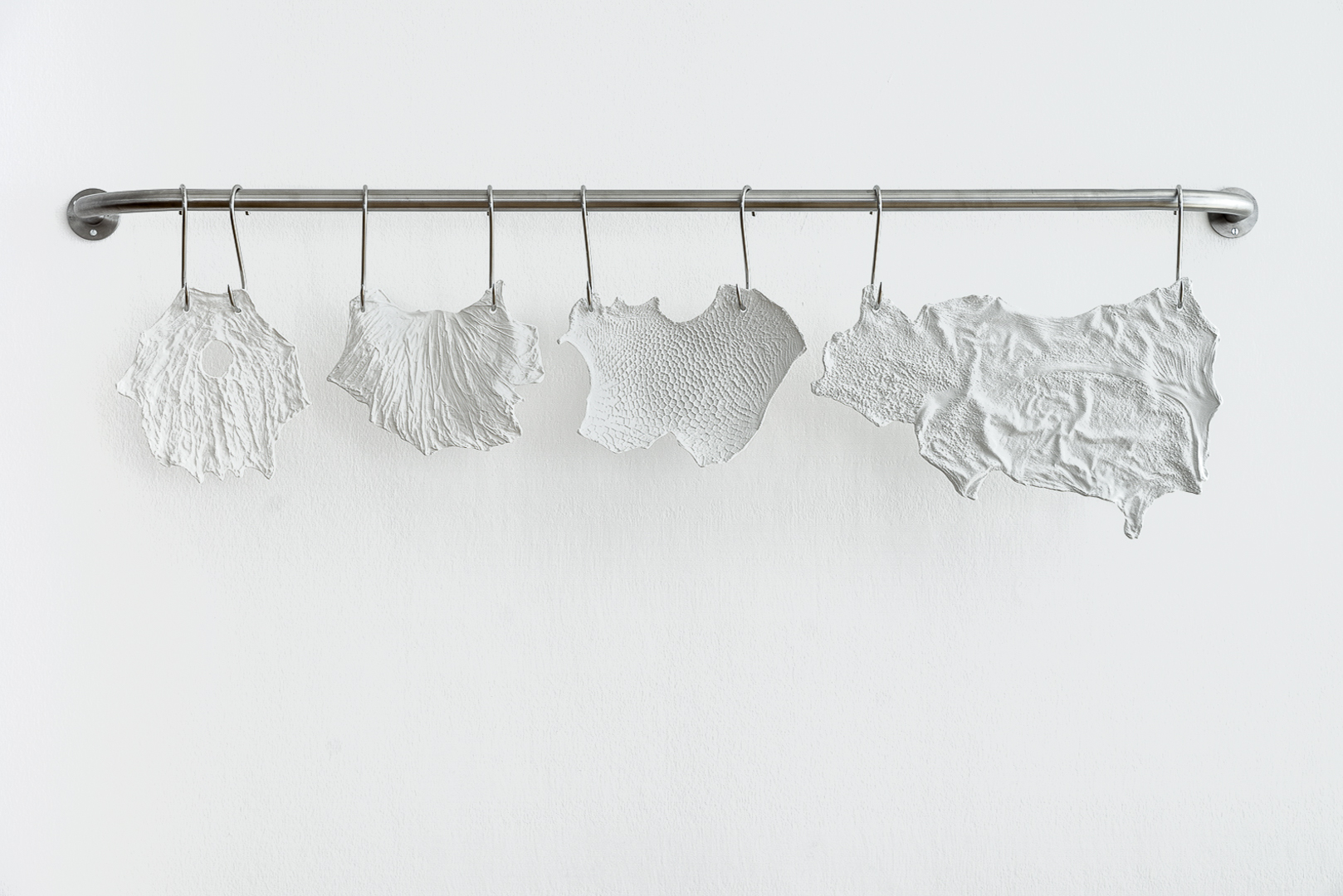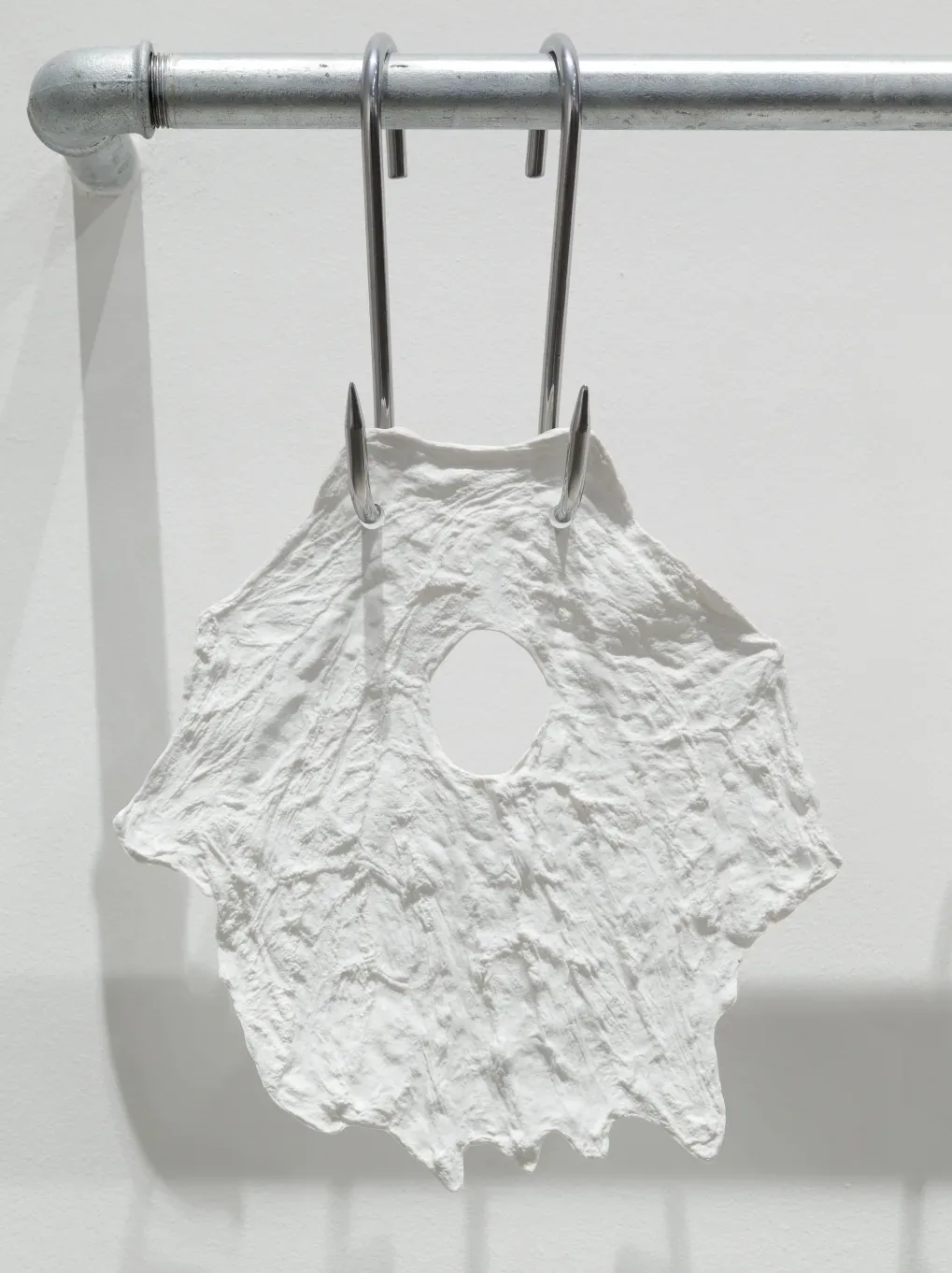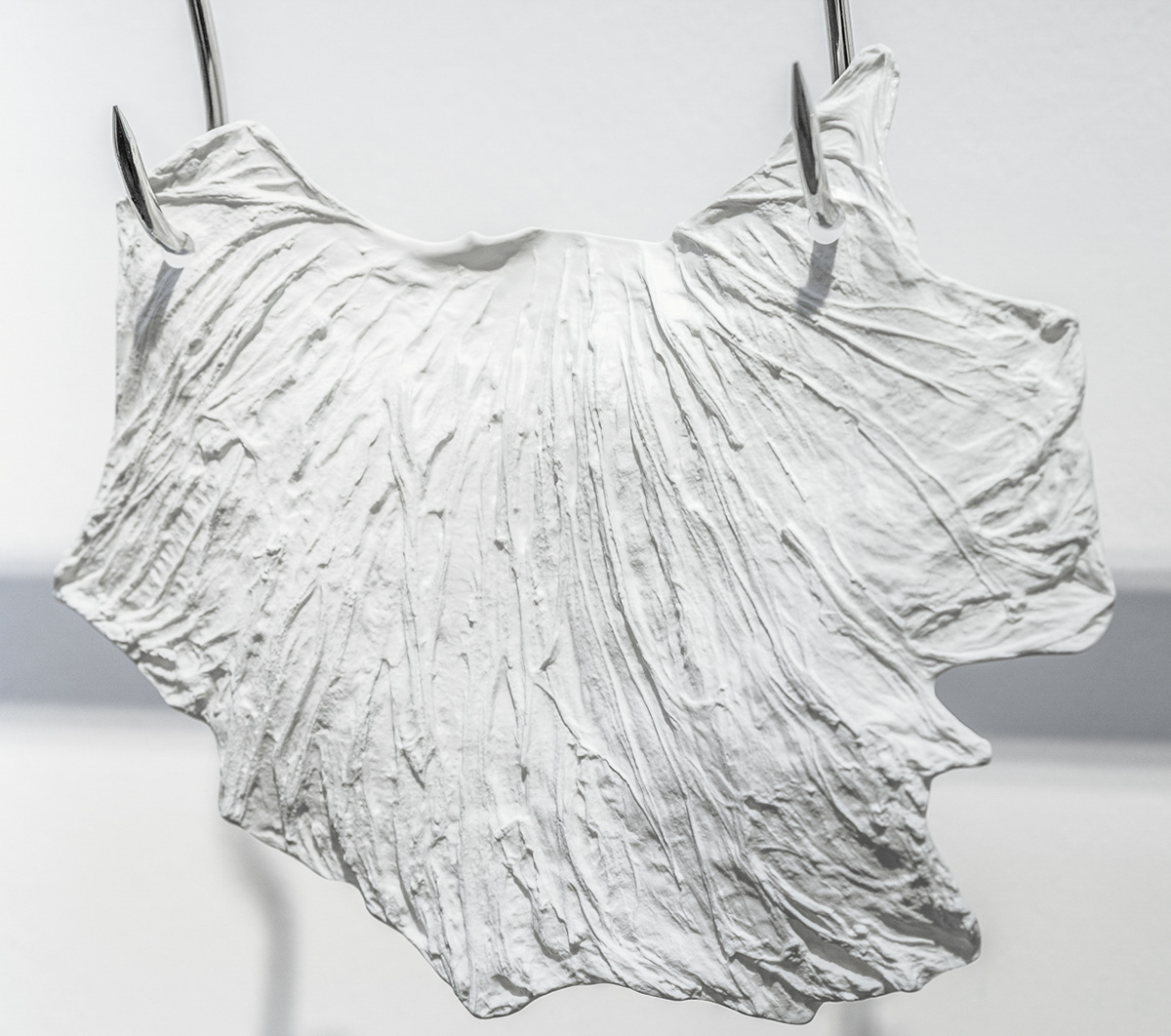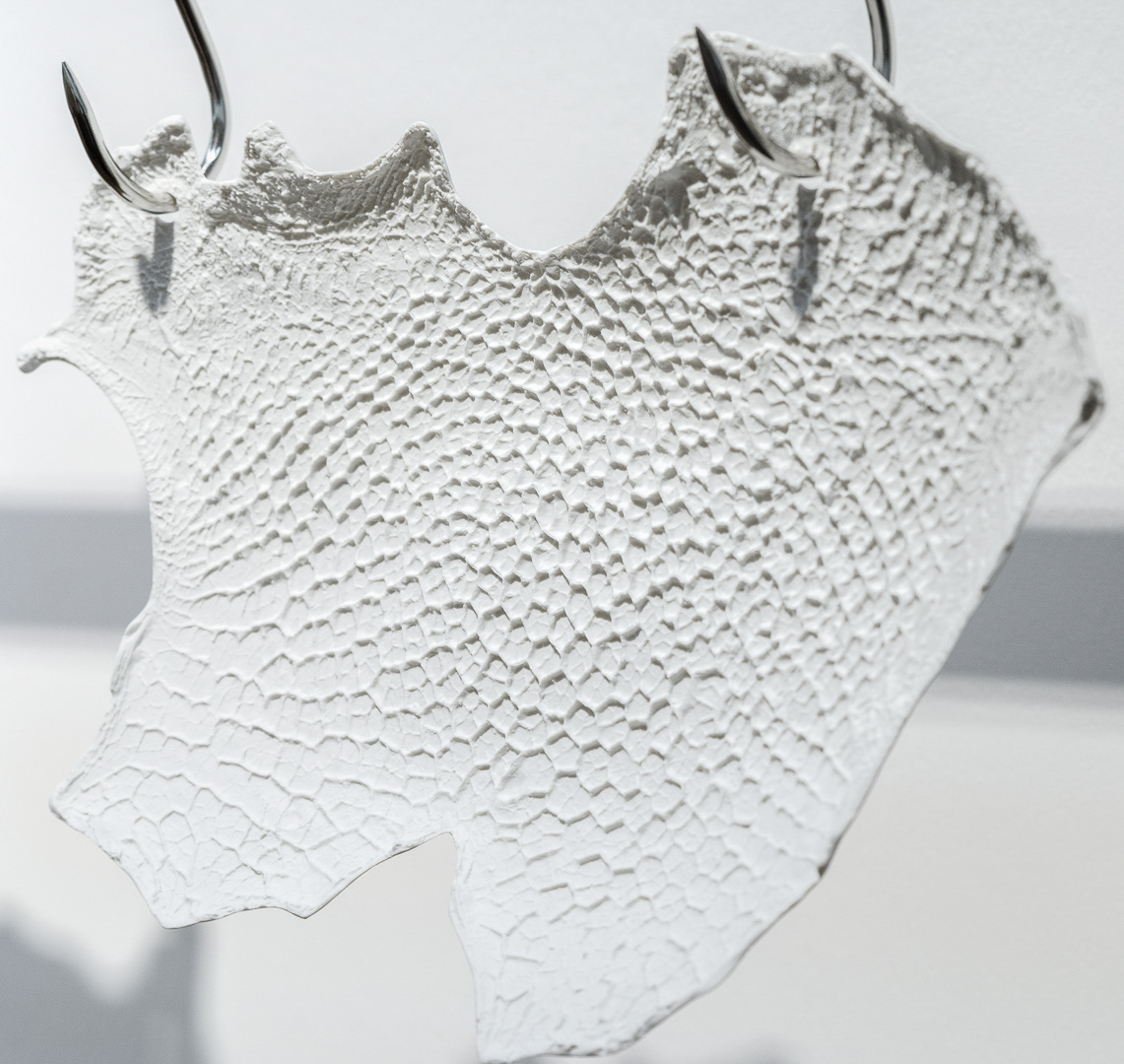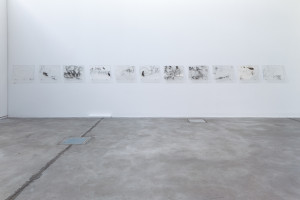There is an urban legend of a butcher in Tunis who wanted to honor the former president Zine Abedine Ben Ali. His idea was to open a shop called the Seventh November Butcher Shop, referring to the day Ben Ali assumed the presidency in a “medical” coup d’état from his predecessor, President Habib Bourguiba. After the butcher did this, he disappeared without a trace.
Because of the gossip surrounding the missing butcher, Kaabi-Linke became aware of the butcher shops in Tunisia, where freshly cut meat and bleeding animal heads are hung next to the shop doors.
The purpose of this bizarre spectacle is to display freshness and quality—as long as the blood is dripping from the carcasses, the meat is assumed to be fresh. “Joy,” “Happiness,” and “Peace” are among the names given to these butcher shops.
Kaabi-Linke’s process of slitting the stomach, cutting it into four parts (rumen, reticulum, omasum, and abomasum), taking out undigested grass, and turning the guts inside-out to stretch, dry, print on, and then cast (first in silicone, then plaster, and finally porcelain) was considered a grotesque reenactment of governmental structures and routines of Ben Ali’s autocracy that characterized a country where dirty businesses went on beneath a pristine surface. In the past, any expression—particularly political opinions—needed to be carefully weighed. In the butcher’s case, a certain approved gut feeling was absent. The line between insult and homage was transgressed by the unspoken proximity of a butcher’s business to the governance of former Tunisia.
Yet despite perennial anxiety of social and economic decline, one grows accustomed to the imbalanced distribution of wealth. The environmental effects of capitalism commodifying all aspects of human activity are well established, and yet there is still no seismic shift in socio-political understanding in sight. Kaabi-Linke’s installation thus becomes a metaphor for this kind of collective indifference to any necessity of change.
